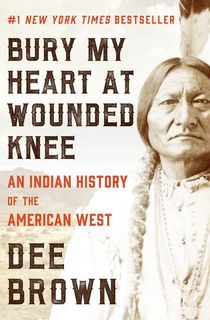Born in 1908, Dorris Alexander “Dee” Brown is rightly regarded as one of the 20th century’s most important writers on the Civil War and frontier history. His best-known work, Bury My Heart at Wounded Knee, deals with events surrounding the near eradication of Native American communities in the late 19th century, and he won huge critical acclaim for his sensitive portrayal of the plight of Indigenous peoples.
Brown was born in Louisiana but grew up in Arkansas. He later credited a childhood meeting with Chief Yellow Horse, a pitcher for the Arkansas Travelers baseball team, as an early inspiration for his later interest in Native American history. Brown graduated with a degree in library science from George Washington University in Washington, D.C. and subsequently went on to enjoy a long and successful career in that profession until his retirement in 1973.
From the late 1940s onwards, he also enjoyed a parallel career as a writer and published over 40 books in total, including critically acclaimed Civil War histories, Western-themed novels and books for young people. Brown had reached the age of 90 by the time his last book, The Way To Bright Star, was published in 1998. He died four years later, in December 2002, at his home in Little Rock.
It can sometimes be difficult to know where to start when an author has such a varied and extensive output from which to choose. In the hope, then, that it helps the decision-making process, the following list features 15 of Dee Brown’s best regarded books, including both nonfiction and fiction.
Nonfiction
Bury My Heart at Wounded Knee
Brown spares no detail in this harrowing, but gripping, epic history of American Western expansion during the late 19th century. The author adopts a nuanced approach to his subject, making extensive use of primary sources to delve deep into what events meant specifically for each Native American community.
Originally published in 1970, Brown’s “original, remarkable and finally heartbreaking” history (New York Times) was notable for being the first work of its kind to portray events from the Native American perspective. Indeed, Brown’s portrayal of their plight was so sensitively written that many critics initially believed the book’s author to be a Native American.
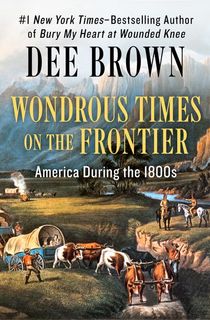
Wondrous Times on the Frontier
Brown examines in depth the social and cultural history of the American frontier in this entertaining book. Packed with fascinating stories and humorous anecdotes, the author extensively researched local newspapers, personal journals and diaries to ensure that he accurately portrayed the diverse range of pioneers who once called the place home. Brown examines all aspects of frontier life, from the courtroom theatrics of the frontier lawyers to the experiences of 19th-century celebrity visitors like Mark Twain and Oscar Wilde.
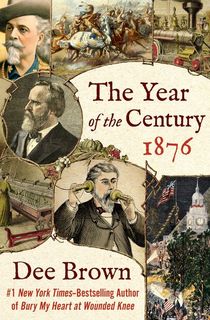
The Year of the Century, 1876
The year 1876 marked the centennial of American independence and is generally regarded as representing a landmark moment in the nation’s history. In his enjoyable overview of the year, Brown provides a typically detailed and illuminating account of a country that was experiencing great political, social and industrial change. This is represented in the range of topics covered by Brown, which include that year’s highly contentious presidential election, the ongoing frontier wars and the early days of the women’s suffrage and civil rights movements.

Hear That Lonesome Whistle Blow
Brown’s riveting history reveals the real story behind the rapid development of the US transport network that led to the construction of five major transcontinental railroads before the end of the 19th century. Whilst marveling at the skill and ingenuity of the great railroad builders, Brown also sheds light on the darker side of this rapid expansion, particularly the ruthless profiteers who cared little about environmental issues and had even less regard for the West’s Indigenous people.
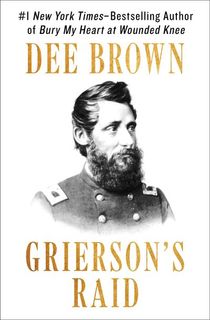
Grierson's Raid
When it came to writing about the Civil War, Brown excelled in focusing on influential figures from both sides who, despite making decisive contributions, have remained relatively unknown. One such combatant was former music teacher Benjamin Grierson, who, in the spring of 1863, led around 1,700 Union troops on a raid deep into the Confederate heartlands.
Brown details their extraordinary 600-mile journey through Mississippi into Louisiana and outlines how Grierson successfully fulfilled his brief to distract Confederate attention away from the real main event. This was General Grant’s crossing of the Mississippi River, which ultimately led to the key capture of Vicksburg.
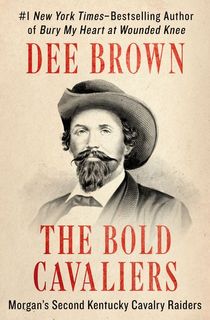
The Bold Cavaliers
Here, Brown’s subject is the charismatic Confederate General John Hunt Morgan, who assembled a formidable group of cavalrymen, dubbed the Morgan Raiders, and then proceeded to launch a series of impactful guerrilla raids on Union strongholds. Most daring was the legendary “Great Raid” during the early summer of 1863, when Morgan led his men on an epic 1,000-mile mission from Tennessee to northern Ohio, causing chaos as they went. Brown’s “accurate and frequently exciting” account (Kirkus Reviews) brings to life this relatively unknown episode in Civil War history.
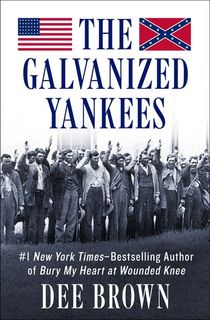
The Galvanized Yankees
The title of this book refers to the term given during the Civil War to former Confederate prisoners of war who swapped sides and joined the Union Army. Although they were not trusted sufficiently to go into battle, the Galvanized Yankees were often sent west to guard the frontier and ward off incursions by the Native Americans. Brown’s fascinating history sheds light on this previously overlooked group of men, outlining in detail the routes taken by each individual expeditionary force and what happened when they arrived at the Western frontier.
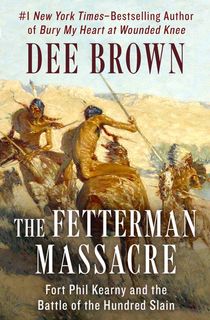
The Fetterman Massacre
The Chicago Tribune describes Brown’s account of the Fetterman Massacre as “one of the best studies that has been made of any sector of the Indian Wars”. The historian delves deep into the events in present-day Wyoming that led to the ambush and killing of 81 US soldiers, under the command of Captain William Fetterman, by a small band of Native Americans. Like all of Brown’s works, the subject has been meticulously researched and he includes an interesting history of Fort Phil Kearny, where Fetterman’s detachment was based.
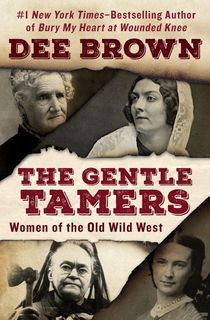
The Gentle Tamers
Brown’s The Gentle Tamers tells the story of the American West from a different viewpoint, focusing on the mid-19th century female pioneers whose experiences were often as remarkable as those of their male counterparts, but have seldom been told. This lively social history features an interesting cross-section of notable women who took part in the westward migration, including Elizabeth Custer, Esther Morris and Virginia Reed.

Showdown at Little Big Horn
The 1876 Battle of the Little Bighorn, also known popularly as Custer’s Last Stand, proved to be the most decisive Native American victory in the long-running “Indian Wars”. Yet, in the long run, the defeat of Custer and his men only served to fuel anti-Native American sentiment and prompted the US government to step up its efforts to end the war once and for all.
In Showdown at Little Big Horn, Brown makes extensive use of eyewitness accounts from a variety of participants on both sides to provide invaluable insight into the sequence of events that led to this defining moment in US history.
Historical fiction

Action at Beecher Island
Brown’s historical fiction was just as meticulously researched as his nonfiction. In this novel, the author vividly recreates the true story of an 1868 nine-day siege in Colorado when a band of US Army scouts found themselves stranded on a small island in the Arikaree River, surrounded by a large war party of Native Americans.
Brown’s novel is narrated from the viewpoint of several different characters from both sides, a highly effective technique which allows him to portray the action from a number of different perspectives.

Cavalry Scout
Brown again utilizes all his considerable skills as a chronicler of the American West in this engrossing novel about treachery and torn loyalties. US army men, Singleterry and Dunreath, are captured by two female Cheyenne fighters whilst on an advance scouting mission. Upon hearing the women’s story of tragic loss, forced relocation and broken promises, Singleterry’s outlook on the conflict is changed forever, but he is soon faced with an agonizing decision as to whose side to take after witnessing for himself this treachery in action.
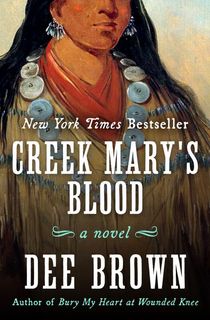
Creek Mary's Blood
Brown’s New York Times bestselling historical novel fictionalizes the remarkable true story of Mary Musgrove and her descendants. Regarded as an important figure in the early development of 18th-century Georgia, Mary’s mixed heritage enabled her to act as a cultural mediator between the Indigenous Creek community and the English colonists.
Packed with rich historical detail, Brown’s compelling fictional account goes on to recall events including the War of Independence, the Trail of Tears and the Civil War through the bitter experiences of Mary's descendants, culminating in the infamous 1890 massacre of the Lakota people at Wounded Knee.
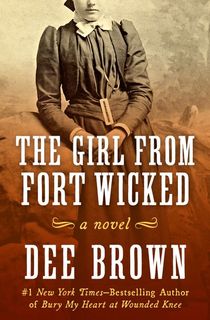
The Girl from Fort Wicked
Set against the backdrop of America’s rugged frontier landscape, this rip-roaring adventure story begins with a raid on a wagon train for which local Arapaho Indians are said to be responsible. Four civilians are killed, including the future wife of one Captain Westcott, and so the US army officer sets out on a mission to discover the truth, encountering many plot twists and turns along the way. Brown excels again at portraying the American West way of life in this novel, adopting a typically nuanced and well-researched approach to his subject matter.
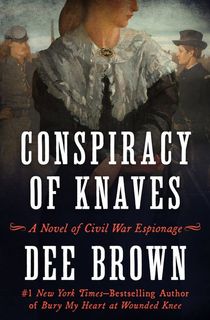
Conspiracy of Knaves
Brown’s entertaining fictionalized tale of romance and espionage, set during the Civil War, is centered around the relationship between Charley Heywood, a dashing Confederate officer, and Belle Rutledge, an actress turned double agent who is tasked with spying on him. The novel takes for its inspiration the real-life Chicago Conspiracy of 1864, when Confederate sympathizers in the North plotted to free some 8,000 prisoners of war held captive in Chicago.
This post is sponsored by Open Road Media. Thank you for supporting our partners, who make it possible for The Archive to continue publishing the history stories you love.

